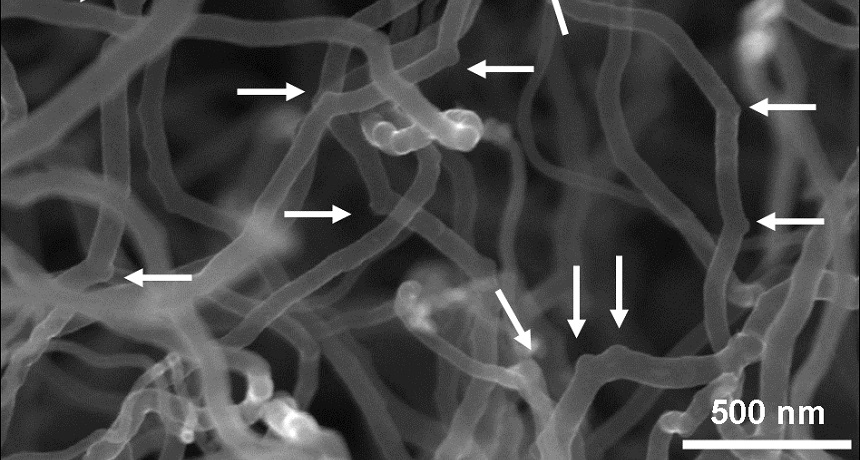QUESTIONS for Cool Jobs: Super Small Science

Arrows point to elbows created in carbon nanotubes in this close-up of a nanotube sponge. The elbows are created by boron atoms, and give the material its sponginess.
Mauricio Terrones/Pennsylvania State University